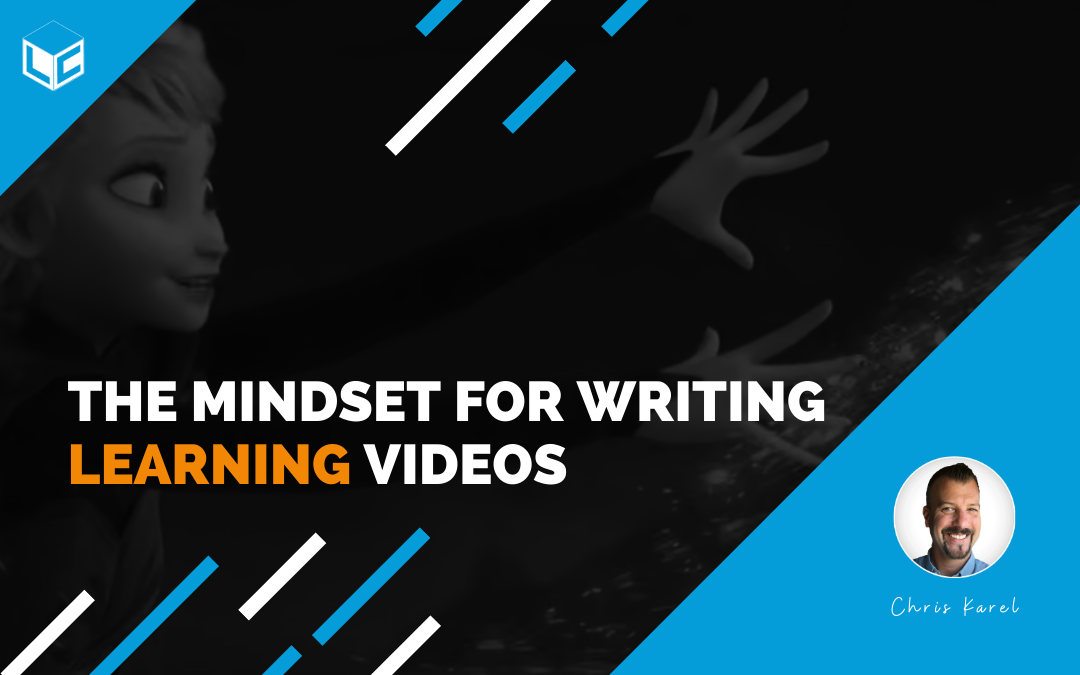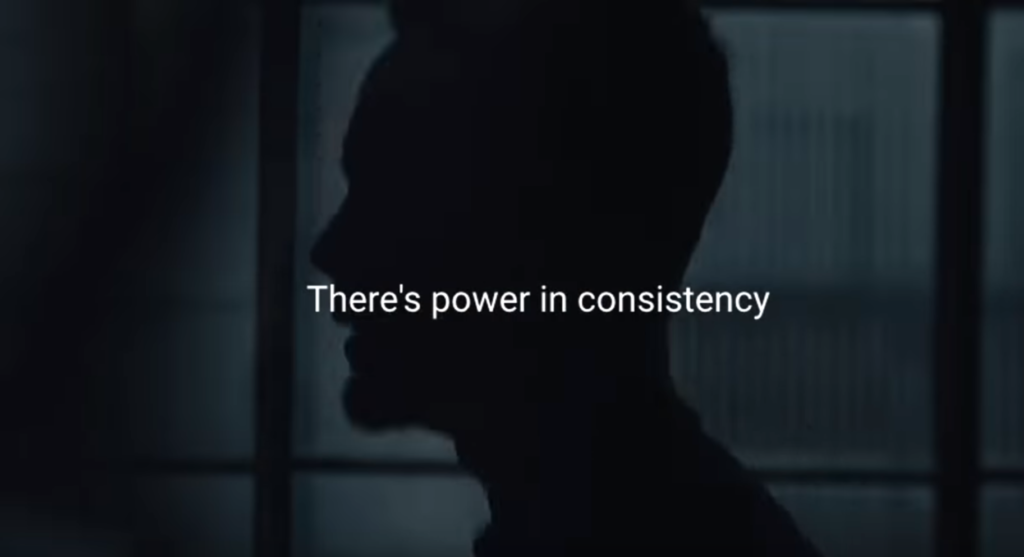I’m on a mission to help people make and use video for learning purposes. This post focuses on cultivating the appropriate mindset for writing learning videos. This is part six in the series designed to help you write better video scripts for learning purposes.
Part 1: Scriptwriting for Learning
Part 2: The Writing Process for Learning Videos
Part 3: 4 Must-Have Skills for Writing Scripts for Learning
Part 4: 5 Best Practices as a Learning Video Scriptwriter
Part 5: 3 Learning Video Storytelling Formulas
Part 6: The Mindset for Writing Learning Videos
So, let’s get to it!
Vader’s is red,
Skywalkers blue,
do or do not,
that much is true.
The Mindset for Writing Learning Videos
In order to deliver on the promise of video for learning, you need to have an open-minded, inquisitive and fiercely dedicated mindset. If you are going to improve the knowledge, skills, and behaviors of your audience, then I suggest letting go of your biases and your ego as it relates to the content. Be consistent in your approach to method and style. Focus on the details so that you always, always, share error-free versions with your reviewers. And finally, omit needless words. Now close your eyes, listen to the soft piano play the introduction as Elsa climbs her flowing magenta cape up the side of the frozen mountain. It’s time to “Let it go!”
Let it go…It’s not yours

As a writer of video for learning, you are writing for another person. You are not writing for your spouse. You are not writing for your child. You are not writing for your mother or your father. Harness your inner Elsa, use your writing power freely, and “Let it go!” because it’s not yours!
I’ve worked with too many writers over the years that are simply unable to “Elsa” their writing. They get hung up on the way “it should be” instead of “Letting it go!” If you’ve ever said or heard someone say the following then it’s time to Elsa:
“I’ve designed this strategy because it’s perfect for your content. Let me explain the theory…”
“I don’t understand why you don’t see what I’m trying to do here.”
To the internal team, “They just don’t know how to make good training.”
“The SME is so stupid. If they just got out of the way we could write a perfect video.”
Let it go, it’s not yours, don’t care (as much) about what they are going to say. Our job in writing learning video scripts for our clients or a specific audience is to give them the information for which they are looking. You can only present your ideas based on the research you’ve invested in writing content for them. Your job is to present your ideas rooted in learning theory. It’s okay if they disagree! Even if they wordsmith the entire thing, it’s okay.
It’s okay! Take a deep breath, and be free. Ignore the storm that wants to rage inside you. Criticism about your writing is not a personal attack on you as an individual. Let it go, let it go, don’t hold onto it anymore.
Be consistent
The tone, voice, and style should finish the same way it started. If you are going to write a script that is formal and authoritative, then that tone should carry through to the end.
For example, let’s say you are writing for a talking head that speaks directly to the camera, a pilot providing direction to pilot trainees. You want them to evoke strength and authority. They should say things like, “I have seen this type of thing numerous times,” or “My experience as a pilot has taught me that preparation is the greatest teacher of them all.” If suddenly, you write, “Sometimes I just make it up as I go,” or worse, “Let me tell you a joke about a frog, a camel, and a scorpion,” then you’ll have a problem. As soon as you change the tone to ambiguity or inappropriate humor, you have eroded your tone of strength and authority. Of course, humor and ambiguity can be excellent learning devices as long as you start and end with the same style.
If the voice you plan to use is conversational and features contractions like “I’ve” or “don’t” instead of “I have” and “do not,” then carry that voice through to the end. You are not being creative by varying “don’t” with “do not”; you are likely offering your learners a confusing voice.
Style is easier to maintain. The syntax, word choices, and sentence structure should also finish how you start. The number one way to maintain a consistent style is to strive to share error-free writing with your reviewers and your audience.
Share error-free

Before you get all reactionary on me, I’m not suggesting you try to be perfect as you write. Making mistakes as you write is part of the process. It is not, however, a part of the sharing process. In other words, when you share a draft with a client or publish the final version that becomes a video, it should be error-free.
I grew up hearing the phrase, “the devil is in the details.” Well, let me just say that if that is true, then I will continue to be a fan of the devil, wearing my Devil’s hat while eating deviled eggs and devil’s food cake for dessert.
To be a strong writer for learning video, you have to be detail-oriented. Use your software’s spelling and grammar checker, use Grammarly, and proofread as you’ve never read the words before. Walk away, come back, and proofread some more. There are numerous ways to write error-free. Here’s my method:
- Organize, outline, streamline, and research first
- Let Grammarly suggest as I type, draft, proofread, revise, spelling/grammar check
- Share with an internal editor for tracked changes
- Revise the draft, proofread, revise, spelling/grammar check
- Read out loud, edit, revise, spelling/grammar check
- Publish to the audience
Of course, you also need to write all the time. The more you write, the easier it becomes to share error-free writing. Finally, always remember that a good writer is humble and dedicated to delivering a high-quality writing product. The hallmark of high quality is delivering products that are error-free.
Simple and concise makes everything nice

I am a Strunk and White follower. I keep it by my desk and use it weekly. Concise writing means you omit needless words (Strunk & White). The Knight Center at Michigan State University suggests you consider Strunk and Seuss:
An ode to brevity
“It has often been said
there’s so much to be read,
you never can cram
all those words in your head.
So the writer who breeds
more words than he needs
is making a chore
for the reader who reads.
That’s why my belief is
the briefer the brief is,
the greater the sigh
of the reader’s relief is.
And that’s why your books
have such power and strength.
You publish with shorth!
(Shorth is better than length.)”
…Dr. Seuss
OR
Omit needless words
…Strunk and White
Summary
Let’s recap on how to maintain a good mindset while writing video scripts for learning purposes. Remember, you are writing for others. Let go of your fixation on being right and having it your way. The power of your writing will come through as you give your client and their audience what they need. Firmly present your ideas, but be willing to give way to the way they want it. Be consistent in your tone, voice, and style throughout your writing and in your published drafts. Sharing error-free versions of your writing will legitimize your authority as a good writer. Finally, a good writer is concise. Omit needless words.
Helpful Links
Are you new to learning about video for learning? Consider reviewing my four-part series, Video for Learning Fundamentals.
Part 1: The Case for Video
Part 2: We Need Learning Video Production Skills
Part 3: 5 Phases of Video Production for Learning
Part 4: The Glossary of Learning Video Terms
Join my feedback loop
What formula or template do you need? Drop me a note and let me know.
If you liked what you read, and would like to join the conversation, please consider subscribing to my newsletter to receive free learning resources delivered to your inbox every two weeks.
I love feedback loops. As Elon Musk said, “I think it’s very important to have a feedback loop, where you’re constantly thinking about what you’ve done and how you could be doing it better.”
THE END



